Gridcoin or How I Learned to Stop Worrying and Love the Cryptocurrency
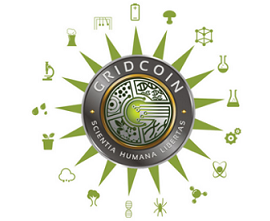
Let's face it - cryptocurrencies have a bad reputation today. I was of the same opinion, not so long ago. How to turn things around? Let's start from the very roots.
How it all began - SETI@home and the onset of CPU mining
My crypto-journey started in 1999. although I didn't know it then. Of course, there were no cryptocurrencies back in 1999. but that year Berkeley University in California launched SETI@home - first massively popular distributed computing project. After joining up, users received SETI@home workunits, crunched them on their PCs and uploaded results back to Berkeley. Keep in mind, dial-up connections (with maximum speed up to 5 kB/sec) were still the most common way to connect to Internet in 1999. so it was a bold idea back then, to launch such an Internet-based project. In a very short time, hundreds of thousands joined SETI@home (me included), far exceeding project's staff original expectations. There were no monetary incentives, no ads, no marketing campaigns, but people joined nevertheless - attracted by small, but captivating chance of discovering a signal of Extra-Terrestrial Intelligence in those workunits (recorded with Arecibo radio-telescope). Thus, the idea of public volunteer computing was born and it quickly gained worldwide attention - people were eager to contribute to science with their PCs. In a way, it was also the birth of CPU mining, though we didn't mine coins - we mined through SETI@home workunits for scientific discoveries.
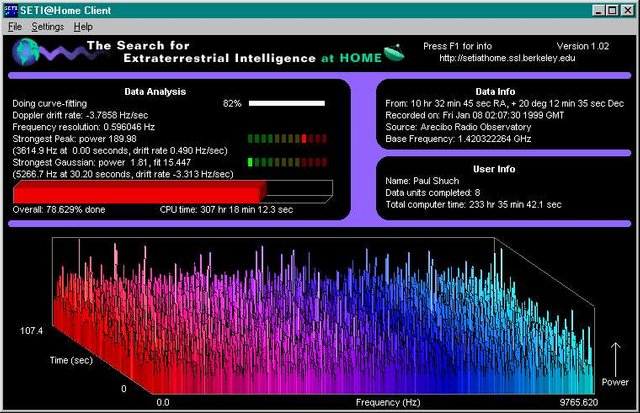
SETI@home in 1999.
BOINC
In 2002. Berkeley released BOINC - Berkeley Open Infrastructure for Network Computing. It became a platform on which various computing projects can be run and SETI@home became one among many. Original SETI@home, today known as SETI@home Classic, was retired in 2005. By that time, many other scientific projects arrived on BOINC and the community continued to grow. SETI@home was still immensely popular, so I decided to switch to another project, which was in greater need of new volunteers. I joined Einstein@home.

Old BOINC logo in 2002.
GPU mining
In 2008. SETI@home released a GPU application, based on Nvidia CUDA. Now users had an option to crunch SETI@home both with their CPUs and GPUs, with GPU application being about 10x faster. It was the birth of GPU mining and things started to move fast from now on. In 2009. AQUA@home deployed first multi-threaded CPU applications and in 2010. first OpenCL applications arrived, firmly establishing GPU computing on BOINC and dramatically increasing its computing output.
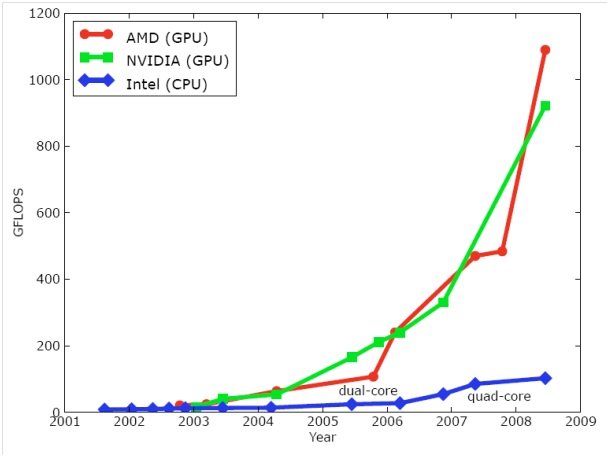
Evolution of CPU vs GPU computing power towards 2010.
The arrival of Bitcoin
By 2010. I was already well-aware of Bitcoin, which was little more than an obscure scheme back then, worth nearly nothing. Nevertheless, it caught the attention of distributed computing community, because it also used CPU (and later GPU) for mining. Just about that time, I built my first truly powerful watercooled PC, around Intel Q9650 Yorkfield and AMD Radeon HD5870. HD5870 was a very powerful GPU for its time, very well suited both for BOINC and for Bitcoin mining. I had to choose - should I mine this dubious, new "digital currency" or should I stick with BOINC and perhaps make some scientific discoveries in turn? I worried that Bitcoin would forever remain a gimmick and that the computing resources invested into mining it would be basically wasted in the long run. On the other hand, with BOINC I was at least making some contribution to science, even if it was for free.
As you can probably guess it, I decided to stick with BOINC.
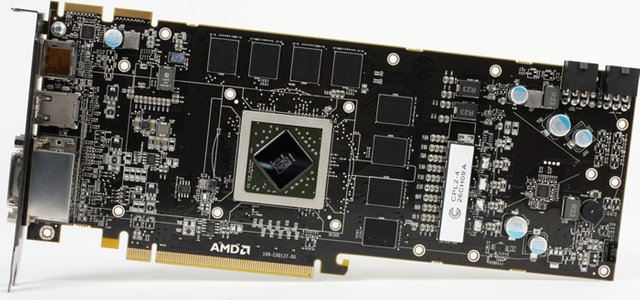
The GPU for serious Bitcoin mining back in 2010. - AMD Radeon HD5870
Bitcoin surges to 1000 USD
It's 2013. and the story probably becomes very familiar here. Bitcoin went through the roof and I watched in astonishment as it passed through 1000 USD. I comforted myself its rapid rise was probably just a temporary spike, fueled by illegal activities. But deep down, I knew I missed out on something very important, more important than BOINC. Since Bitcoin mining without ASICs was at this moment already pointless, I decided to stick with BOINC which has at the same time added Android to its list of supported platforms and with which I have meanwhile discovered a new binary radio-pulsar (through Einstein@home) and five new large prime numbers (through PrimeGrid).
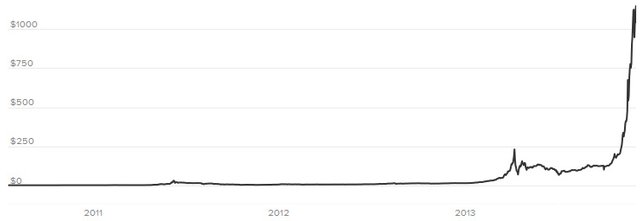
Bitcoin price towards late 2013. That train departed quickly.
The rise of altcoins
During 2013. and throughout 2014. I was aware of the appearance of numerous altcoins. Still, they appeared to be little more than copies of Bitcoin and with much smaller chances of repeating its success. New concepts, like Peercoin and Proof-of-Stake were already beyond my limited knowledge. To me, the whole cryptoscene looked like a big Proof-of-Work quagmire, producing increasing quantities of worthless or crazy-volatile coins and diverting valuable resources from computational science. Not surprisingly, I decided to stick with BOINC.
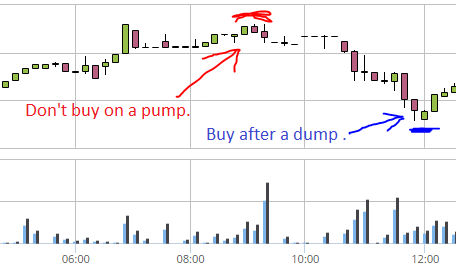
Erm... no thanks.
Gridcoin
Then, in November 2015. I saw this ad on boincstats.com (a very popular website for all BOINC enthusiasts):
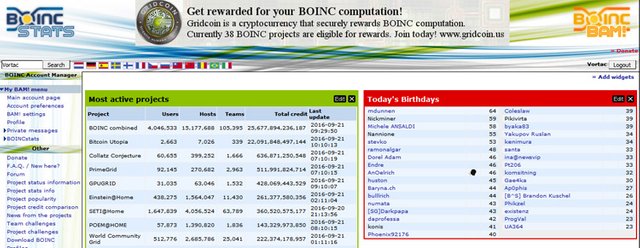
I was completely overawed. A cryptocurrency which is rewarding BOINC computations! A bridge between the world of computational science and the world of digital currencies. I decided to join the second I saw that ad. I thought immediately - this is the future and even if it isn't, then I must try and help to make it so. Bear in mind, at that point I still thought all crypto-coins are more or less like Bitcoin, running repetitive Proof-of-Work hashes which are a powerful tool for securing the blockchain, but little good for anything else. Discovering a coin which uses Proof-of-Stake to secure the blockchain and rewarding widely useful scientific computations (done through BOINC) on top of it was an amazing discovery for me. It completely changed my view on cryptocurrencies. Needless to say, soon afterwards I discovered the whole crypto world and realized how far it has advanced beyond my simple understanding of Bitcoin. After that, it was only a matter of time before I discovered Steem and ended up here, writing this post.
The road ahead
BOINC was in many ways a precursor to crypto-mining and people who want to use their PCs and Androids for computational science (BOINC has over 4 million registered users) are really only a step or two away from joining the crypto community. Much like Steem and its unique "type your post->get rewarded" concept, the idea of computing for science and getting rewarded is also easy to grasp and is universally appealing to many people across the world. Cryptos are wielding enormous computing power today, but its benefits are still barely noticeable outside the cryptosphere. Embracing the concept of volunteer computing for philanthropic and humanitarian purposes, combined with the cutting edge of scientific progress would be a huge step ahead for the whole cryptosphere and would in many ways validate the idea of crypto to the wider public.
Make your contribution to science by upvoting this post. All funds raised by this post will be donated (with acknowledgments to Steem) to Rosetta@home and GPUGRID - two nonprofit educational and research projects based on volunteer computing and devoted to the advancement of biomedicine and finding cures for some major human diseases. Thank you.


Just promoted your post, as your journey demonstrates that integrity and a commitment to scientific discovery are a valuable currency in their own right! When we do finally make contact, you'll have extra credit in the galactic canteena!Or at least I'll buy you a pint at the Restaurant At The End Of The Universe!
I used seti@home in the '90s and I've been using WorldCommunityGrid since it launched in 2004. I just learned about gridcoin recently (from steemit) and started mining it (via the pool) last week. My only disappointment is that it won't credit me for WorldCommunityGrid without joining the GridCoin team, so I had to suspend that project.
Yes, mandatory team membership is unfortunately a major hurdle for a lot of BOINC crunchers. That might sound strange in today's crypto world, where new cryptocurrencies are rolled out on an (almost) daily basis. But BOINC exists for over a decade now and crunchers have developed very strong loyalties to their teams.
There is a continuous discussion whether or not to remove the mandatory team requirement, check this post for more details:
https://steemit.com/gridcoin/@cm-steem/gridcoin-s-mandatory-team-requirement-should-it-stay-or-should-it-go
Thanks. I read that when I was getting set up. It would be nice if they give up that requirement by the time I collect enough to start mining GRC without going through the pool.
It's funny. I can't even explain my decision process. Rather than switch from a team that I've contributed to for 12 years, I abandon WorldCommuityGrid entirely. I can't claim to have a good reason for it. Sunk costs, I guess.
Whichever way you think about it, science won. :)
If you decide to participate in the gridcoin community please join all of us regulars on IRC at #gridcoin on freenode. You will find many helpful people there who are well versed in gridcoin and boinc, who can help you with any problems, answer questions, and in general just hang out with. There is no telling what you will learn from us just hanging out, since many of us have deep tech backgrounds, and we tend to discuss many things.
Even if you aren't active in crypto currencies but participate in the boinc network you should really consider joining the gridcoin family to get rewarded for your contributions to science!
Another great post by Vortac! Awesome story, would be great to turn this post into a short history-type of YouTube video on Boinc and Gridcoin!
upvoted to support your science contribution. thanks for the info. I found you post interesting. will follow you.
Thanks for sharing your story. I knew a bit about that the BOINC stuff but learned by items through your post!
Didn't realize it was around before bitcoin...wow
BOINC was. But Gridcoin wasn't - it was introduced in 2013.
Beautifully written article on the history of the currency! Thank you for teaching me something new about Gridcoin :)
Your post has been featured in this weeks Gridcoin Weekly at Gridcoin Weekly #6; Week 38.
Well written, I enjoyed reading it. Keep the good work!